Crassula Muscosa (Watch Chain Crassula) Profile
Written by Iris
Dec 14 2021
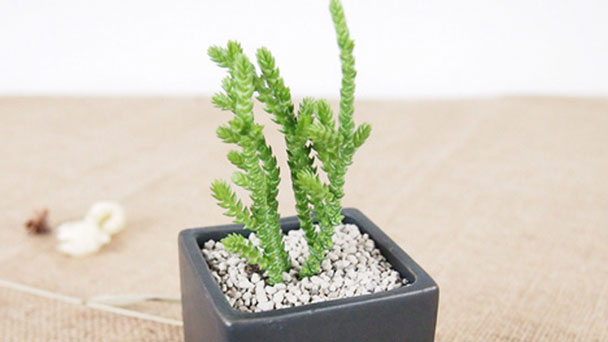
Crassula Muscosa is basically native to South Africa and Namibia. Crassula Muscosa belongs to the Crassula family (Jade tree Plant), commonly known as Rattail Crassula, Watch Chain, Lizard's Tail, and Zipper Plant. Crassula Muscosa (Watch chain Crassula) is the most unique succulent in the Sedum genus because of its very distinctive appearance. Crassula muscosa has very small, yellow-green leaves that are tightly packed into each branch of the stem.
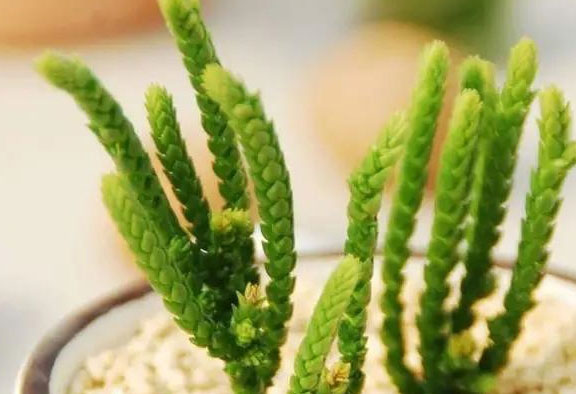
Watch Chain is the most common name for this Crassula muscosa plant because of its delicate interlocking leaves that resemble the tight jewelers’ links used to attach a pocket watch to a vest.
The watch chain succulent grows in a variety of habitats. It is found throughout South Africa, from the Western Cape’s winter rainfall area to the Eastern Cape and north into Namibia and Lesotho, though it is often found only in well-drained rocky quartz fields. It is hardy to around 20 degrees Fahrenheit (6.7 degrees Celsius), but it appears to dislike being cold and wet at the same time.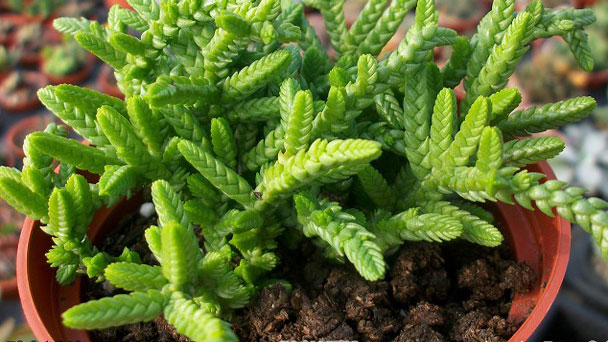
Cut down the 2 cm stem from the Crassula muscosa plant as this is the ideal cutting size to grow a new Crassula plant.
Remove the stem from the mature plant and let it dry for a day so that the cut heals. Next, place it in a well-draining potting mix. Keep it away from direct sunlight and only water it every few days.
In about two weeks you should notice that the stem has grown its new root system. Once the root system is fully developed, you can water it once a week. As the plant grows, make sure you increase the amount of light it gets every day.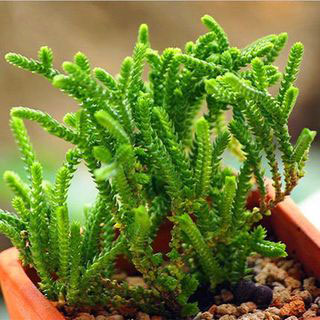
Like all succulent plants, Crassula muscosa don't like high humidity as this can encourage fungus and rots, plenty of ventilation must always be given in very hot and wet weather, the ideal humidity for these Crassula muscosa plants is 50% or lower, but they can take much higher than this if the soil is allowed to dry out in between watering, and the soil is kept much drier in Winter.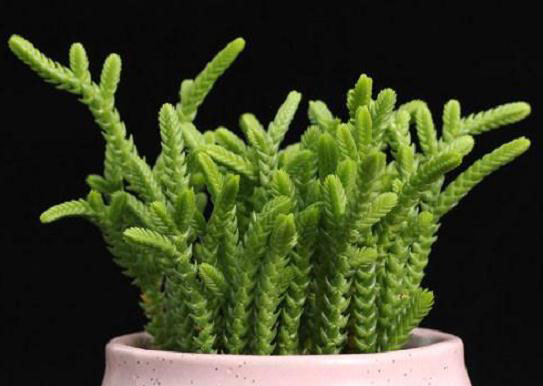
Crassula 'Morgan's beauty': This hybrid cultivar has silver leaves dusted in white, with pretty pink late spring flowers. It grows about 4 inches tall.
Crassula erosula 'Campfire': This variety has long-branching lime leaves that turn blazing red in winter. It's a clumping plant that grows about 4 to 8 inches tall and spreads up to 2 feet wide.
Crassula pellucida variegata : This plant exhibits a flowing mass of heart-shaped leaves variegated in pink, green, and creamy yellow.
Crassula perforata: Also known as the stacked Crassula, this plant has leaves that circle around a central stem, giving it the common name string of buttons.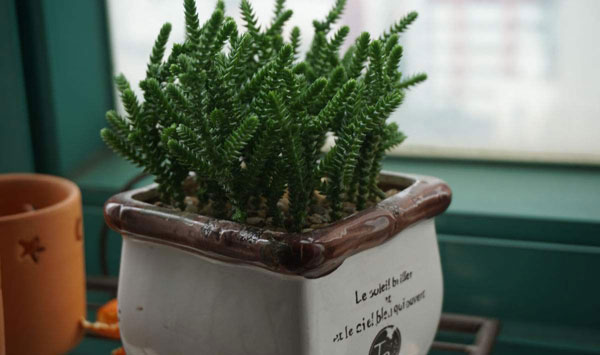
Crassula Muscosa PictureCrassula Muscosa InfoCrassula muscosa Name OriginCrassula Muscosa Native HabitsCrassula Muscosa DistributionHow to Grow & Care for Crassula MuscosaHow to Grow Crassula MuscosaHow to Care for Crassula MuscosaCrassula Muscosa UsesVarieties of CrassulaCrassula Muscosa Common Pests/Diseases
Crassula Muscosa Picture

Crassula Muscosa Info
| Scientific name | Crassula muscosa (syn. Crassula lycopodioides) |
| Common name | Rattail Crassula, Watch Chain, Lizard’s Tail, Zipper Plant |
| Family | Crassulaceae |
| Origin | Namiba, South Africa |
| Height | 10 to 20 cm |
| Toxic | No |
Crassula muscosa Name Origin
The name crassula muscosa comes from the Latin word muscosus, which means “mossy.” It is also known as Crassula lycopodioides.Crassula Muscosa Native Habits
Crassula muscosa is a fascinating string succulent that can reach a height of 12 inches (30 cm) and has a spreading habit of branching stems with tightly overlapping, stacked, narrow, light green leaves. The leaves completely conceal the stems, which begin upright but then trail over due to the weight of all the leaves. The small, pale yellowish-green, musty-smelling flowers appear alongside the tightly packed leaves along the stems from spring to mid-summer. It’s ideal for adding a splash of color to a mixed planting or as a small-scale ground cover in a well-drained mound or rock garden.Watch Chain is the most common name for this Crassula muscosa plant because of its delicate interlocking leaves that resemble the tight jewelers’ links used to attach a pocket watch to a vest.
The watch chain succulent grows in a variety of habitats. It is found throughout South Africa, from the Western Cape’s winter rainfall area to the Eastern Cape and north into Namibia and Lesotho, though it is often found only in well-drained rocky quartz fields. It is hardy to around 20 degrees Fahrenheit (6.7 degrees Celsius), but it appears to dislike being cold and wet at the same time.
Crassula Muscosa Distribution
Crassula Muscosa is present in Southern Africa (Eastern Cape, Free State, Northern Cape, North West, Western Cape, Namaqualand) and southern Namibia. Crassula Muscosa is widely distributed throughout semi-arid and arid karoo areas, and grows preferably in rocky habitats, but is also found on plains.
How to Grow & Care for Crassula Muscosa
How to Grow Crassula Muscosa
- Propagate with Stem Cuttings
Cut down the 2 cm stem from the Crassula muscosa plant as this is the ideal cutting size to grow a new Crassula plant.
Remove the stem from the mature plant and let it dry for a day so that the cut heals. Next, place it in a well-draining potting mix. Keep it away from direct sunlight and only water it every few days.
In about two weeks you should notice that the stem has grown its new root system. Once the root system is fully developed, you can water it once a week. As the plant grows, make sure you increase the amount of light it gets every day.
- Propagate with Leaves
- Propagate with Offsets

How to Care for Crassula Muscosa
- Light Care
- Soil Care
- Water Care
- Temperature and Humidity
Like all succulent plants, Crassula muscosa don't like high humidity as this can encourage fungus and rots, plenty of ventilation must always be given in very hot and wet weather, the ideal humidity for these Crassula muscosa plants is 50% or lower, but they can take much higher than this if the soil is allowed to dry out in between watering, and the soil is kept much drier in Winter.
- Fertilizer Care
- Pruning Care

Crassula Muscosa Uses
As a result of the nature of the Crassula muscosa plant, it isn't hard to grow and preserve within in, say, a balcony, or even inside. It’s a great way to get little ones involved with plants and gardening. In the event that you have plants around your home, watch chain plant can readily be trimmed to squeeze into pretty much any space with no growth getting interrupted.Varieties of Crassula
There are so many species and cultivars of Crassula to choose from that you may become a collector. In addition to the standard jade plant cultivars (Crassula ovata), here are a few others that may catch your eye:Crassula 'Morgan's beauty': This hybrid cultivar has silver leaves dusted in white, with pretty pink late spring flowers. It grows about 4 inches tall.
Crassula erosula 'Campfire': This variety has long-branching lime leaves that turn blazing red in winter. It's a clumping plant that grows about 4 to 8 inches tall and spreads up to 2 feet wide.
Crassula pellucida variegata : This plant exhibits a flowing mass of heart-shaped leaves variegated in pink, green, and creamy yellow.
Crassula perforata: Also known as the stacked Crassula, this plant has leaves that circle around a central stem, giving it the common name string of buttons.

Crassula Muscosa Common Pests/Diseases
Crassula Muscosa is defensive less to mealy bugs and other large scale insects. Overwatering, poor quality and very low temperature is also the cause of root rot. Poor quality soil means the soil with more moisture and less able to drain out the water during the watering process. If accidentally your crassula lycopodioides (zipper plant) is affected, then treat it with neem oil insecticide or any other powder form insecticide. Once your plant is affected your first task is to move affected plant to another area and remove the affected steam with a knife. After removing the affected area keep apply the neem oil for a few days until your Crassula muscosa plant will groom.Latest Updated
- Benefits of Bugleweed - 7 Science-backed Health Benefits
- Bugleweed Dangers & Side Effects - Is It Poisonous?
- How to Plant Evergreen Trees - What You Should Know
- When to Plant Evergreens - Grow Guide for Evergreen Trees
- 12 Wonderful Evergreen Shrubs for Your Garden
- 12 Popular Evergreen Plants with Pictures for Beginners
- When And How To Prune A Lilac Bush Like a Pro
- How to Grow & Care for Lilac Vine (Hardenbergia Violacea)
- Japanese Lilac Tree (Syringa Reticulata) Care & Propagation Guide
- Shumard Oak Pros and Cons - What to Know
Popular Articles
- Winter maintenance of Antirrhinum Majus
- How to Grow Terminalia Mantaly Tree
- How to Grow and Care for Crossostephium Chinense
- How to grow Antirrhinum Majus in spring
- Peristeria Elata (Dove Orchid) Profile: Info & Care Guide
- Underwatered Snake Plant (Sansevieria Trifasciata) - Signs And How To Fix
- How to Care for Brazilian Jasmine Plant (Mandevilla Sanderi)
- How to Grow & Care for Graptopetalum Purple Delight in Summer
- Rosa Chinensis (China Rose): Plant Growing & Care Tips
- How to Care for Baby Sun Rose (Aptenia Cordifolia)